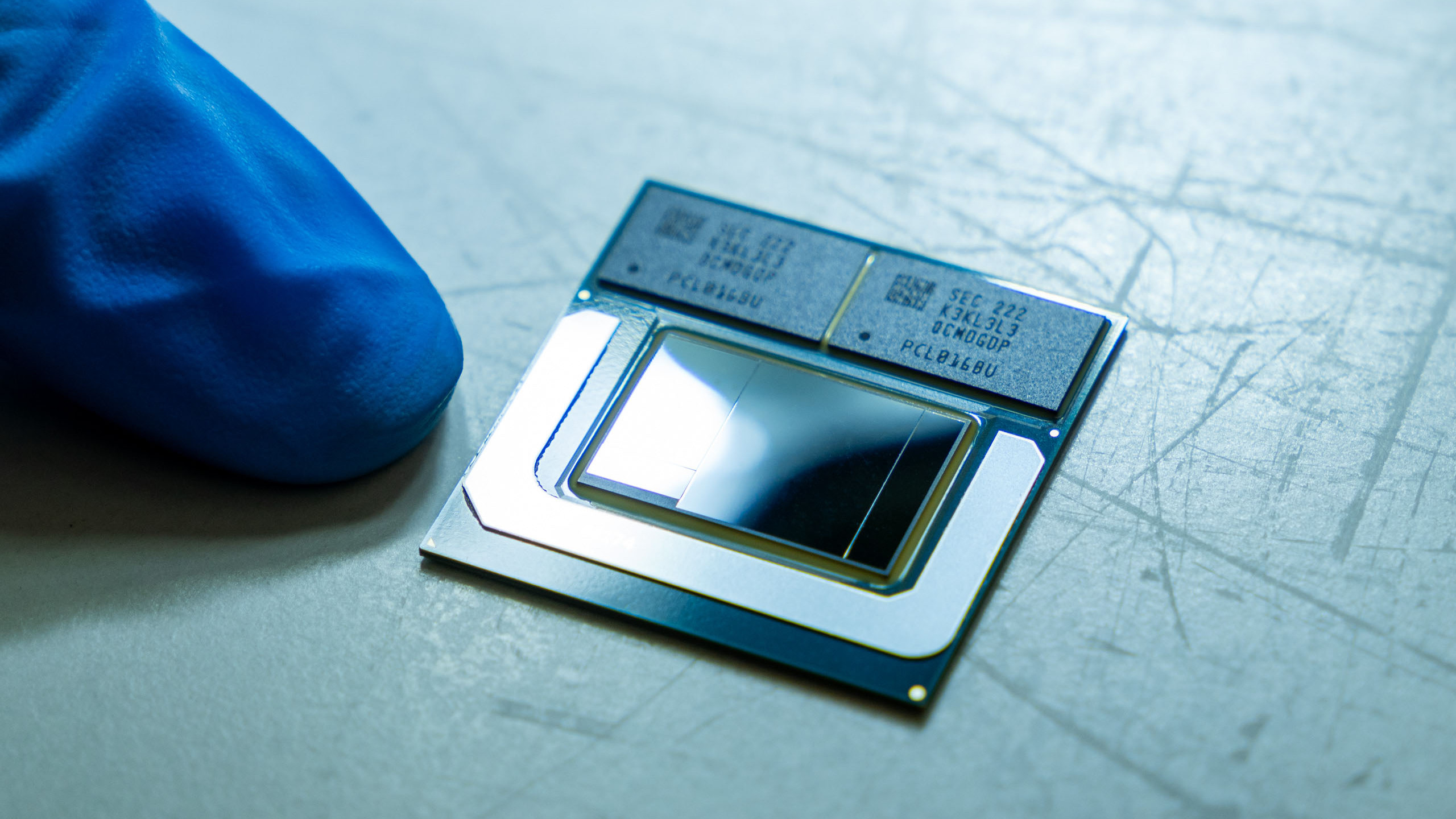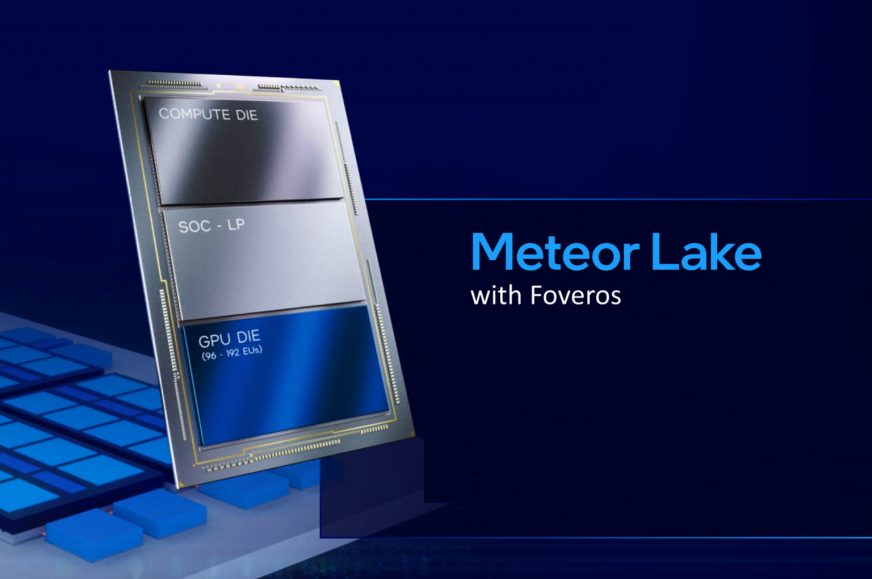Memory packaging characteristic of Apple's SoCs coming to Intel's 4nm chips
When Apple released their first ARM processors for computers in 2020 (Apple Silicon M1), one of the distinguishing features was that the RAM was tightly integrated directly on the processor’s package (substrate), which was called “On-Package Memory”. This allowed for a reduction in power draw and was considered one of the sources of power efficiency for these CPUs. It looks like Intel’s CPUs will now start using the same concept.
Intel has recently been more forthcoming towards the media and often invites representatives of the most important publications (or influencers) to factory courses and similar publicity meetings. Now, during one such event, the company showed reporters various samples of future processors and also provided official images of others, including Meteor Lake processors for laptops, which are Intel’s first chiplet processors and also its first 4nm chips.
Intel has already shown samples of Meteor Lake several times, and the new photo shows exactly the same four known chiplets (under which there should be an additional base tile). This time, however, Intel has shown a package that’s a bit wider and also fits two memory packages in the extra space a few millimeters away from the processor’s chiplets. The structure is very similar to how Apple’s “On-Package Memory” is soldered-on, however the Apple uses a partially cut heat spreader on the processor, while Intel uses a bezel around the silicon. Which is similarly cut off on the side, however, so that the memory can sit right next to the CPU.
This photo should mean that Intel will be manufacturing at least some SKUs of Meteor Lake processors with the same style of memory mounted directly on the processor as Apple does. It has to be said that this isn’t some advanced technology, nor does it use any sort of 3D packaging (which is actually used with the Meteor Lake for the processor part, while Apple only uses 2.5D packaging to connect two pieces of silicon in their higher end Ultra series processory).
This packaging actually uses the usual LPDDR type memory (here it’s reportedly Samsung’s LPDDR5X-7500, with a total capacity of 16GB), and the soldering to the substrate is also essentially conventional technology similar to soldering the chips to motherboard’s PCB. The only specialty stems from the fact that the memory is attached very close to the CPU, which allows the wires to be much shorter then usual and there is also only two soldered contacts in the path, since the traces don’t leave the CPU substrate.

What makes memory on the package better?
Apple’s On Package Memory is sometimes wrongly believed to be providing higher than normal performance, but this is not true, as it has the same bandwidth and latency as a usual LPDDR memory mounted on a motherboard PCB outside the processor. It’s not quite as high-tech as, say, HBM-type memory.
But where it does have a benefit is in power efficiency – while the performance is the same, it can be achieved with less power draw. This is because with the very short trace length involved, LPDDR4X and LPDDR5 or LPDDR5X permit reducing the voltage by a some tenths of a volt and avoid the need to use termination, which noticeably reduces RAM power draw. Apple’s M1 and M2 series processors have benefited greatly from this low power draw, and it is likely that Meteor Lake will reap similar benefits with this kind of memory design and could have better than expected battery life and idle power draw as a result.
Of course, there are also disadvantages – vendors will likely be buying the processor assembled with memory directly from Intel. Current laptop already have LPDDR-style memory hardwired on the board even without chis, so this doesn’t change things with regards to upgrade ability or repairability, but manufacturers will be losing some manufacturing flexibility. In addition, Intel will probably pocket some profit margin for the attached memory (which it will buy from Hynix, Micron or Samsung en masse) when selling the whole unit to laptop manufacturers. This may have an impact on the end-user laptop prices, especially for configurations with higher RAM capacities.
On the other hand, there may be some cost savings reaped in building the motherboard PCBs, which will be simplified. The DRAM signal routing is one of the most challenging parts of the motherboard design and the on-package memory approach isolates it into the processor’s substrate.
It is not yet clear whether this type of package with integrated memory will represent a special variant for Meteor Lake processors, or whether Intel will push it as the mainstream type. We expect it’s more likely that the traditional packaging without memory will continue to be the default basic option for now, and the “On-Package Memory” variant to be less common special product. It’s also possible that this variant of the processor will be introduced a bit later and not in the first wave when the first Meteor Lake processors are supposed to be launched this fall.
Source: Tom’s Hardware
English translation and edit by Jozef Dudáš
⠀








